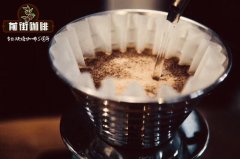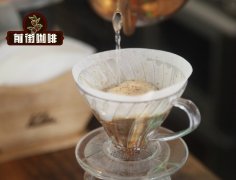The significance of Water activity Curve in Solar treatment of Alida Manor Coffee
Wilford Lamastus, the owner of Alida Manor, talks about sun treatment.
The process of solarization treatment
The so-called sun treatment (Natural process), strictly speaking, should be called "whole berry drying". It is the oldest and seemingly simplest treatment: for more than a thousand years, the principle is to harvest coffee berries, spread them on the ground and dry them, then remove the dried peels / pulp / coffee shells, and then get raw beans, that's all.
But this seemingly simple operation actually has the most complex and difficult-to-control microbial action and flavor products!
Let's start with the role of microorganisms: hundreds of thousands of microorganisms are basically divided into three categories: fungi, bacteria, yeast, etc., and these microorganisms have different preferences for environment and nutrients, such as aerobic / anaerobic, temperature, water activity, carbohydrate types, pH values. It's all different. A single water activity environment, from 0.88 to 1.0, 0.80 to 0.88, and 0.60 to 0.80, can respectively create a favorable environment for these three types of microorganisms (for example, fungi can adapt to the lowest water activity and can move above 0.60; yeast can work in an environment of 0.80 to 0.88, but ordinary bacteria can't!) . If coupled with the supply of large or small amounts of carbohydrates (which can be regulated by the maturity of coffee varieties and berries), and the rate of drying. We can create whether a specific type of microorganism is active or not, and regulate the degree and type of fermentation to a certain extent.
This is why the key factor of "drying rate" is specifically mentioned. Because in principle, the drying rate is the key to the operation of the traditional sun method to regulate the flavor.
Significance of water activity curve
Of course, strictly speaking, Wilford grasps the "water activity curve" of the peel and pulp layer during sun treatment; the first effect of this curve is the fermentation rate: the higher the water activity, the faster the fermentation rate. In addition, this curve will also affect the type of fermentation: different water activity regions are suitable for different types of microorganisms, but also suitable for different biochemical pathways of fermentation. More importantly, the microbial activity promoted and inhibited by the continuous action of this curve from beginning to end determines the transformation of peel and pulp contents and the accumulation of primary biochemical products. Combined with the subsequent chemical condensation reaction, volatilization and infiltration, the flavor of this batch of sun-dried beans was determined.
This seems to be a traditional and basic operation of drying beans, but in fact, there are a lot of details to pay attention to! In fact, many farms and processing plants trying to make excellent sun-cured coffee have been stumped. Friends who have drunk Alida's micro-batches of dried beans the next day must be able to feel clearly that the style and beauty of these batches of coffee are rare all over the world.
Compared with many farmers who prefer to go to the cutting edge to seek a breakthrough, under the trend of investing in anaerobic treatment, Wilford also began his research and a few experiments, but he did not seem to be in a hurry. The editor guessed that his old god had his reason: first learn to walk, then learn to run. If we can not grasp the key of traditional solarization in the regulation of microorganisms, the introduction of more complex new technologies will not bring any advantages. Of course, the editor is also looking forward to what a unique and fascinating taste Wilford, who already knows the key to the regulation of microbes and their chemical reactions, will produce when they officially enter the field of anaerobic fermentation.
Important Notice :
前街咖啡 FrontStreet Coffee has moved to new addredd:
FrontStreet Coffee Address: 315,Donghua East Road,GuangZhou
Tel:020 38364473
- Prev

Flavor characteristics of coffee beans in the town of Muraya, Kenya
The coffee bean flavor of Muraya town in Kenya belongs to the town of Muraya in the central province of Kenya, which falls at 1350-1950 meters above sea level. The environment and climate suitable for coffee production and fertile volcanic soil (clay Nitisol) give birth to about 100, 000 small coffee farmers. Among them, the Gittika processing plant is a processing plant in the Kanyenya-ini cooperative system, about 1700 meters above sea level. From April to September of every year
- Next

There are three levels of coffee hand brewing: brewing architecture, large parameters, and small parameters.
Hand brewing has always been the first choice for many enthusiasts to make their own coffee, and because they are holding their own pot to inject water from beginning to end, the brewing process is full of ritual. But often encounter a friend reaction, at home always can not flush the taste of drinking in the coffee shop, but do not know how to adjust the steaming time, grinding scale, water injection method, water temperature etc. For beginners, I build
Related
- Beginners will see the "Coffee pull flower" guide!
- What is the difference between ice blog purified milk and ordinary milk coffee?
- Why is the Philippines the largest producer of crops in Liberia?
- For coffee extraction, should the fine powder be retained?
- How does extracted espresso fill pressed powder? How much strength does it take to press the powder?
- How to make jasmine cold extract coffee? Is the jasmine + latte good?
- Will this little toy really make the coffee taste better? How does Lily Drip affect coffee extraction?
- Will the action of slapping the filter cup also affect coffee extraction?
- What's the difference between powder-to-water ratio and powder-to-liquid ratio?
- What is the Ethiopian local species? What does it have to do with Heirloom native species?

